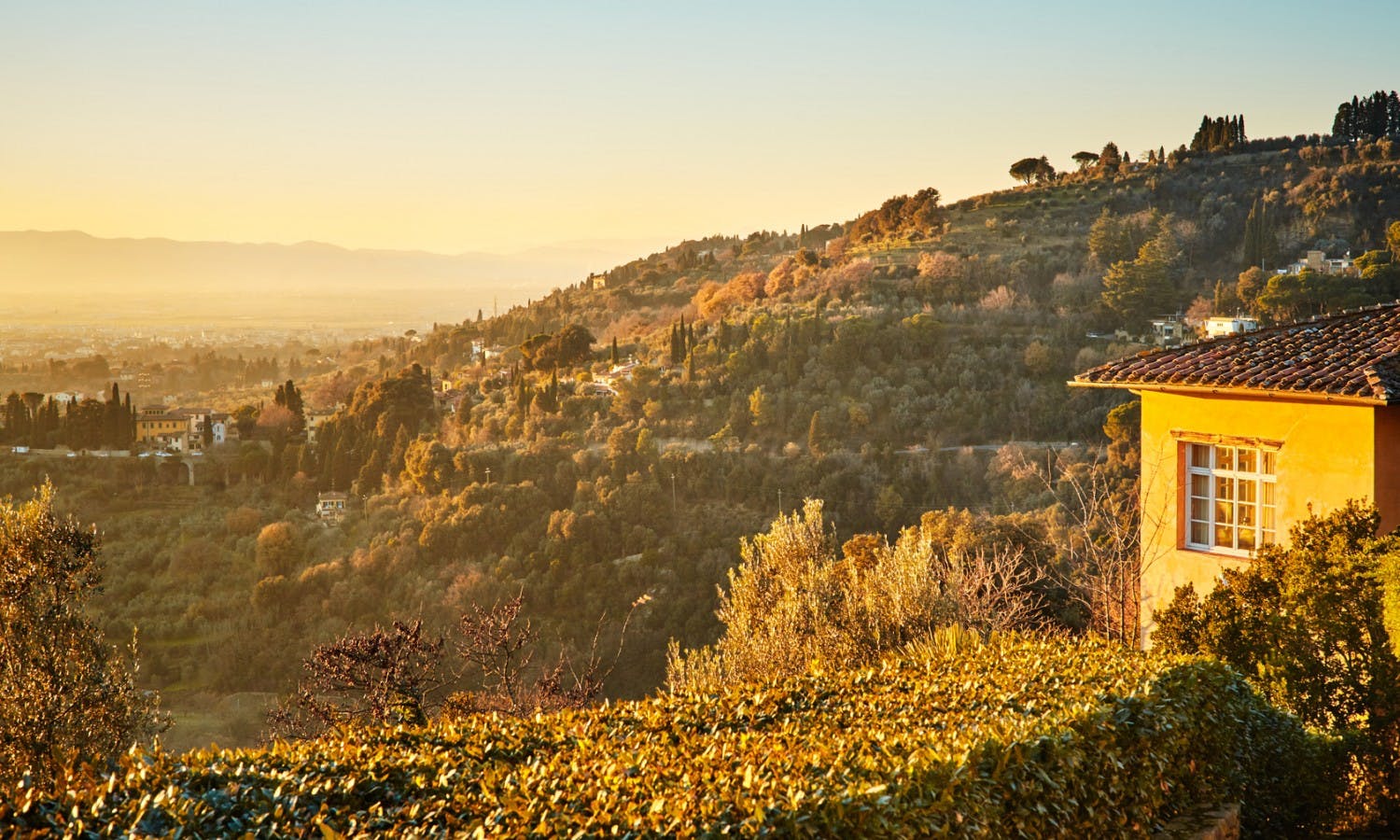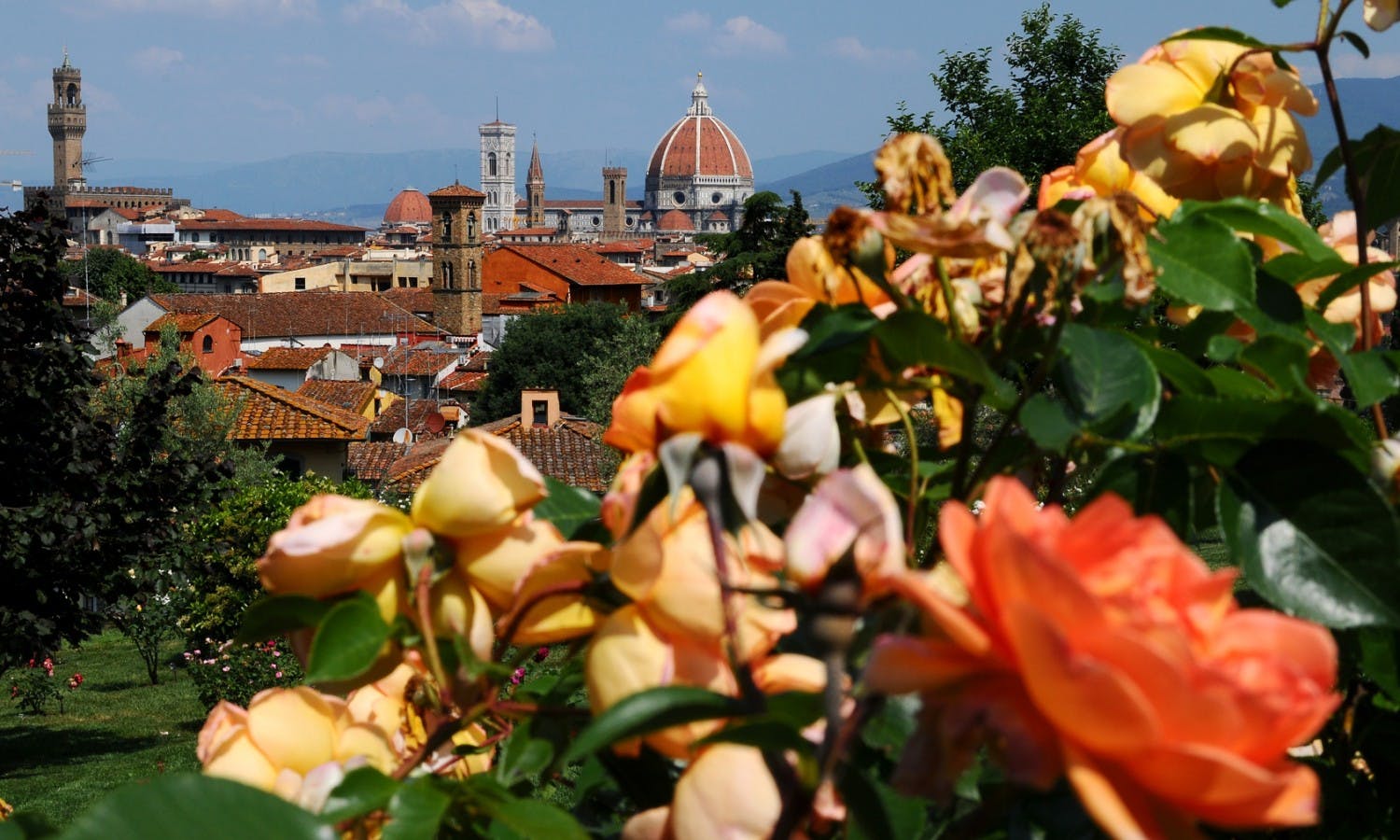Florence is hands down one of the world’s best cities. In addition to the top sights and destinations, there are some amazing places off the beaten path.
Florence is without doubt one of the world’s most-loved and best-known Italian cities by virtue of its distinct beauty and important history. Besides the famous Uffizi Gallery, Cathedral of Santa Maria del Fiore, Ponte Vecchio, Piazzale Michelangelo and Santa Croce – all must-sees for first-time visitors to Florence – the town is full of wonderful little hidden gems and sights, all just waiting to be discovered, that you have (perhaps) never heard of.
Here are eight off-the-beaten-path places to visit in Florence:
1) Tepidarium del Roster: Not many people know that the largest glasshouse in Italy can be found right here in Florence, in the Horticultural Garden. Built in the second half of the nineteenth century for the very first national horticultural show, the Tepidarium is a majestic Art Nouveau building by Giacomo Roster made of cast iron and glass. It serves as a venue for shows, exhibitions, markets, cocktail parties and tastings. The flower show held each year at the end of April and beginning of May is a must-see, especially when the butterflies emerge from their chrysalises. (Horticultural Garden – 1 Via Vittorio Emanuele)
2) Caffetteria Oblate: Who hasn’t dreamed of sipping drinks in Florence while gazing in awe at Brunelleschi’s dome? There’s a bar in the city centre that feels like you could almost reach out and touch it: Caffetteria delle Oblate, on the terrace of the library of the same name, which often puts on events, shows, concerts and readings, and provides a wonderful – and unparalleled – view over one of the city’s most important icons. (Caffetteria delle Oblate – 26 Via dell’Oriuolo)
3) Officina di Santa Maria Novella Behind one of the doors right in the city center is an ancient world full of drapes, frescoes, glittering lampshades, parchments, eau de colognes, essences, soaps, potpourri and many more natural fragrances, as well as skincare products made from recipes that are 600 years old but nonetheless of the very highest quality. One of the oldest pharmacies in the world, the Officina di Santa Maria Novella was founded in the 1200s and is where the liqueur Alchermes, among other things, was invented. A guided tour will reveal all its secrets to you. (Officina Profumo Farmaceutica di Santa Maria Novella – 16 Via della Scala)

The breathtaking view from Fiesole
4) Fiesole: Drive around a few bends up the hill from the city center and you will arrive at Fiesole, Florence’s panoramic terrace, a wonderful hilltop hamlet overlooking the city that was once an Etruscan fortress, and which for a time was home to Frank Lloyd Wright. Here, besides the breathtaking view almost 300 meters above Florence, there are villas, museums and even a Roman amphitheater where concerts are held. You can take a bus from the city center up to the main square, Piazza Mino, and browse in the pretty antique market on the first Sunday in the month where you’ll find furniture, ceramics, porcelain, paintings, books, dolls and much more besides. (To get to Fiesole, take bus 7 from the stop in Piazza San Marco/Via della Dogana in Florence)
5) The English Cemetery: Anyone who loves the Père-Lachaise cemetery in Paris shouldn’t miss the opportunity to visit the English Cemetery in Florence. Located near the city’s former Porta a Pinti and divided by two winding gravel avenues, this little hill is covered with lush green plants, rose bushes, cypresses and monumental statues in the typical romantic style that inspired the famous American poet Emily Dickinson. A number of illustrious English and American writers and artists are buried here, including Elizabeth Barrett Browning and Theodosia Trollope. (The English Cemetery – 38 Piazzale Donatello)

The Rose Garden
6) The Rose Garden and the Iris Garden: For a romantic walk with your beloved away from the crowds, there is no better place for lovers than the two gardens dedicated to two fragrant flowers, just a stone’s throw from the far more famous Piazzale Michelangelo. Opened in 1895, the Rose Garden was created by the architect Giuseppe Poggi when the capital of Italy moved from Turin to Florence. It is home to around 1,000 varieties of roses and offers a picturesque view of the city. The Iris Garden, open only at the end of April and the beginning of May, hosts more than 1,500 varieties of iris from all over the world each year, including exceedingly rare Japanese and Louisiana aquatic species. It is not a commonly known fact that Florence’s “lily” is in actual fact an iris, originally white on a red background; after the defeat of the Ghibellines, the victorious Guelphs inverted the colours and the city’s flag became a red iris on a white background, which is the one used to this very day. The entrance is in Piazzale Michelangelo.
7) Villa Bardini Another must-see, away from the hordes of tourists in the usual museums, is Villa Bardini, which was built in the first half of the seventeenth century and offers some of the most beautiful views of Florence. Gherardo Silvani built the villa in the early 1600s, and Giacomo Le Blanc, who bought the villa in the 1800s, turned it into an English garden, a riot of irises, roses and hydrangeas with picturesque caves, classical sculptures and a theatre. Its 60 rooms and lounges house the Capucci Museum, dedicated to the designer; the Annigoni Museum with 6,000 works by the painter; and an area devoted to contemporary art. (Villa Bardini – 2 Costa San Giorgio)
8) Florence from the River Arno Not everyone knows that the boats used by the “renaioli” – the workers who dredged the river bed for the sand used to build the Florentine palazzos – still offer their own special view of the city. Traveling along the Arno on this unusual means of transport is an experience like no other. The route runs from the Ponte Vecchio to Ponte alla Carraia passing under the Ponte Santa Trinità, as you sail by the historic buildings and beautiful bridges, including the Palazzo della Borsa, Ponte Vecchio, the Uffizi Gallery and the Vasari Corridor. (Departures in Piazza Mentana from Lungarno Diaz)
